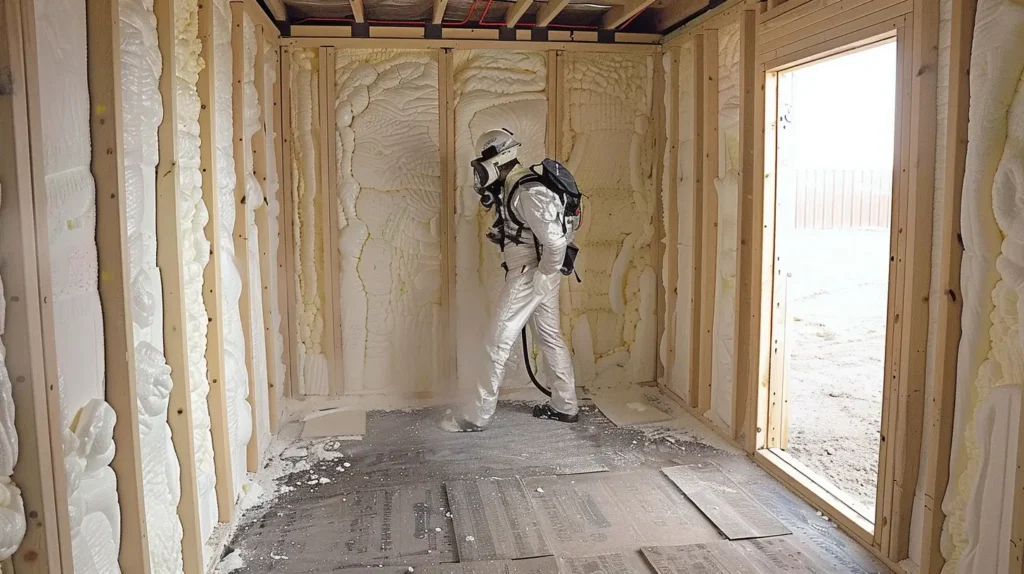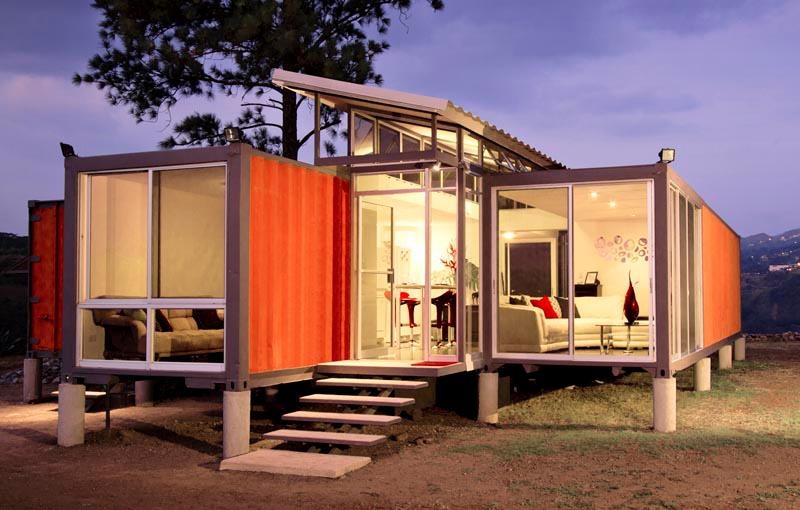Before you commit to your dream container home, it’s essential to plan for container home insulation and climate control from the start. Steel containers absorb heat quickly, and without the right materials and techniques, your home could feel more like an oven than a retreat. In this guide, we’ll walk you through the best ways to insulate your container home so it stays cool, energy-efficient, and comfortable—even in the harshest tropical conditions.
In this guide, we’ll break down a fascinating real-world study from India that tested 21 different wall and roof systems. The goal? Find out which insulation performs best in hot, humid conditions. So whether you’re planning a DIY build or working with a contractor, this article will help you make better, cooler choices. 😎
Why You Need Container Home Insulation in Warm, Humid Climates
Steel is a heat conductor. In the tropics, that means daytime heat gets trapped inside and turns your container home into a sweatbox. Without proper container home insulation, you’ll battle:
- Intense indoor heat
- Condensation and mold
- Higher cooling costs
Insulation helps reduce heat transfer, improve thermal comfort, and protect your home long-term.
What the Study Did
Researchers in Chennai, India, ran a thermal performance test on 21 container wall and roof configurations. They used simulation tools to measure key factors:
- U-Value (lower is better): How well materials resist heat transfer.
- Heat Gain/Loss: Total heat entering or leaving.
- Time Lag: How long it takes heat to pass through.
- Cost: Material affordability.
They compared uninsulated containers, traditional brick buildings, and 19 insulation types.
Hot Tip: Best Wall Insulation in Humid Climates
Winner: Open-Cell Spray Polyurethane Foam (OCSPF)
- U-Value: 0.384 W/m²K
- Heat Gain: Just 4.2 Wh/sqm
- Time Lag: 12 hours — longest of any tested
- Cost: ₹70,146 (≈ $845 USD)
Why it works: This foam expands into every nook, forms an airtight seal, and slows heat dramatically. It also outperformed traditional brick walls by 83%.

Hot Tip: Best Roof Insulation in Humid Climates
Winner: Open-Cell Spray Polyurethane Foam (again!)
- U-Value: 0.334 W/m²K
- Heat Gain: Just 4.1 Wh/sqm
- Time Lag: 12 hours
- Cost: ₹30,284 (≈ $365 USD)
Bonus: Strawbale and cork insulation also performed well for container home insulation and were even more budget-friendly. But they had lower time lag (6 and 1 hour respectively).
Watch Out For…
- Unmodified Containers: These had terrible performance. One model showed 100 Wh/m² heat gain. No insulation = no comfort.
- Lead-based Paint & Arsenic in Flooring: Always ask for the history of your container or choose single-trip/new.
- Poor Ventilation: Even with great insulation, you need airflow. Consider passive cooling techniques.
Moisture, Ventilation & Vapor Barriers
When building a shipping container home in a hot and humid region, heat is only half the battle—moisture control is equally critical. High humidity levels can quickly turn a steel container into a breeding ground for mold, mildew, and condensation damage if not properly managed. This is why conatiner home insulation alone isn’t enough—your plan must include effective vapor barriers and smart ventilation strategies.
Why Vapor Barriers Are Essential
A vapor barrier is a material layer that resists moisture diffusion through walls, floors, or ceilings. Without it, warm moist air from the outside (or from activities like cooking and showering) can seep into cooler interior wall cavities, condensing into water and encouraging mold growth. In hot, humid zones, placing the vapor barrier on the outside of your insulation is typically recommended to prevent moisture from entering the wall assembly.
Pro tip: In humid southern U.S. states, use a Class I or II vapor retarder on the warm side of the wall (usually the exterior face in cooling-dominated climates).
Tips for Airflow and Passive Cooling
Ventilation isn’t just about fresh air—it plays a key role in reducing indoor humidity and improving comfort levels.
Here’s how to design for airflow:
- Install operable windows and louvered vents on opposing walls to enable cross-ventilation.
- Use clerestory windows or roof vents to allow hot air to escape upward (stack effect).
- Incorporate ceiling fans or wall-mounted fans to increase circulation and reduce reliance on AC.
- Avoid airtight interior walls unless properly ventilated, as trapped humidity can lead to condensation.
Passive cooling tip: Orient your container home to maximize prevailing breezes and shade key walls from direct sunlight.
Recommended Container Home Insulation Materials for Humid Climates
Certain container home insulation and barrier materials perform better in high-humidity environments:
- Closed-cell spray foam: Acts as both an insulator and vapor barrier, sealing metal surfaces effectively.
Also consider:
- Rigid foam boards with foil facings: Provide insulation + radiant heat reflection + moderate vapor resistance.
- Vapor-retarding membranes (e.g., polyethylene sheets): Affordable and effective when installed on the exterior side of insulation in humid climates.
- Breathable wall wraps (e.g., Tyvek): Can be combined with rigid insulation to allow outward drying while still protecting from moisture intrusion.
By combining well-placed vapor barriers, thoughtful ventilation, and moisture-resistant materials, you’ll dramatically improve your container home’s durability and indoor air quality—especially in challenging tropical or subtropical climates.
Pro Tips for Prospective Tropical Builders
- Always insulate your walls & roof — roof heat gain is often worse!
- Use high-performance materials like OCSPF for warm, humid regions.
- Compare local costs: Foam might be cheap in one region and pricey in another. Always research your options.
- Factor in time lag: More delay = cooler afternoons.
- Vapor Barriers Are Essential – use on the outside of your insulation is typically recommended to prevent moisture from entering the wall
- Think systems, not just materials: Combine insulation with good windows, cross-ventilation, and shading.
Key Takeaways
- Open-cell spray foam is the best all-around performer for container home insulation in hot climates.
- Always insulate both walls and roof.
- Use vapor barriers & cross flow ventilation
- Traditional brick walls performed worse than insulated steel walls when done right.
- You can build a cool, comfortable container home — but only if you plan for it.
Final Thoughts
Thermal insulation isn’t a fancy upgrade — it’s a survival essential in hot, humid zones. This study proves that container homes, when properly insulated, can outperform even conventional materials.
So before you grab that angle grinder or blueprint, take the time to plan your container home insulation. Your future cool, mold-free, and cost-efficient self will thank you.
Ready to build smarter? Explore more container design guides at EcoContainerHome.com 🏡

Join the conversation on sustainable living — comment by